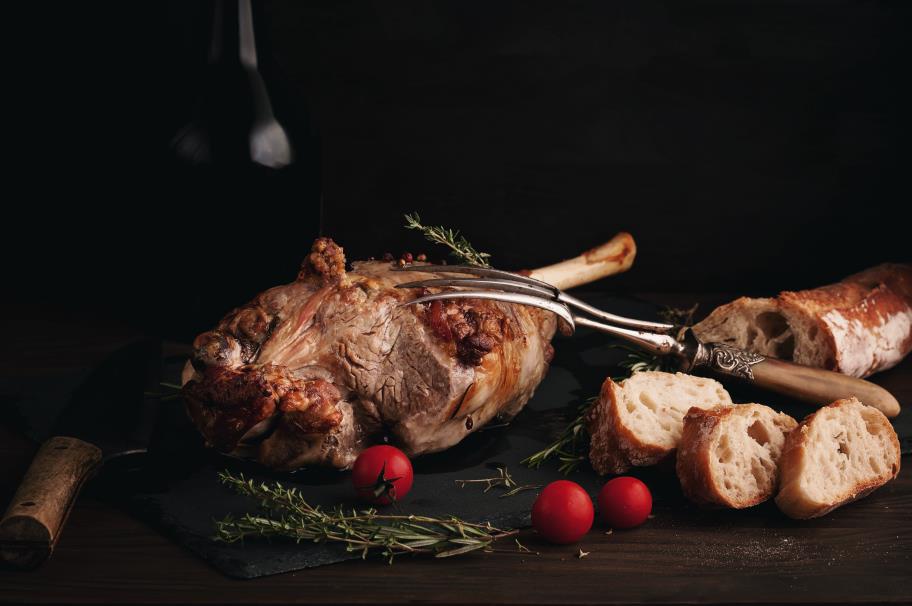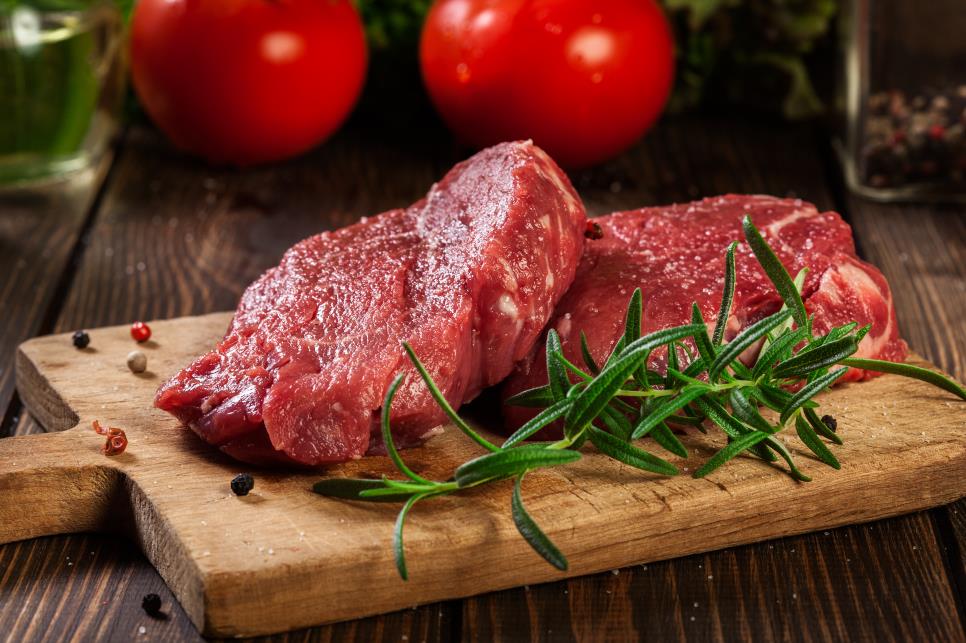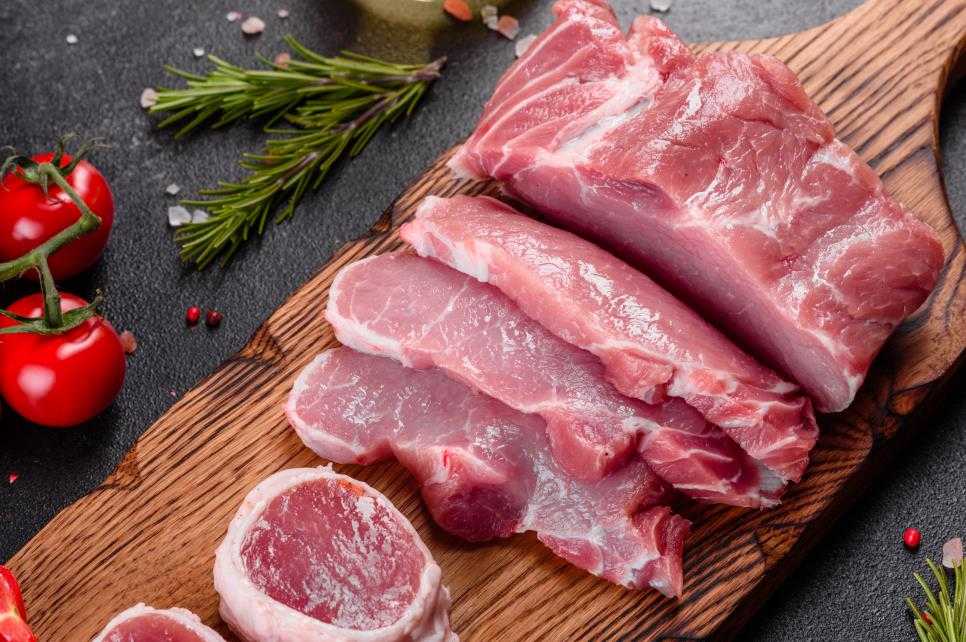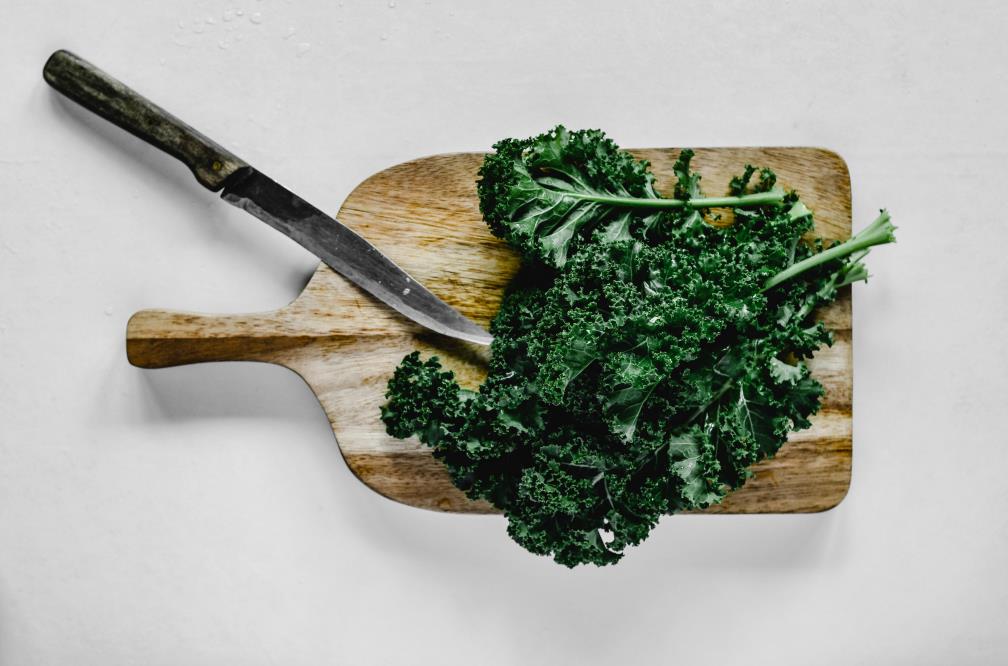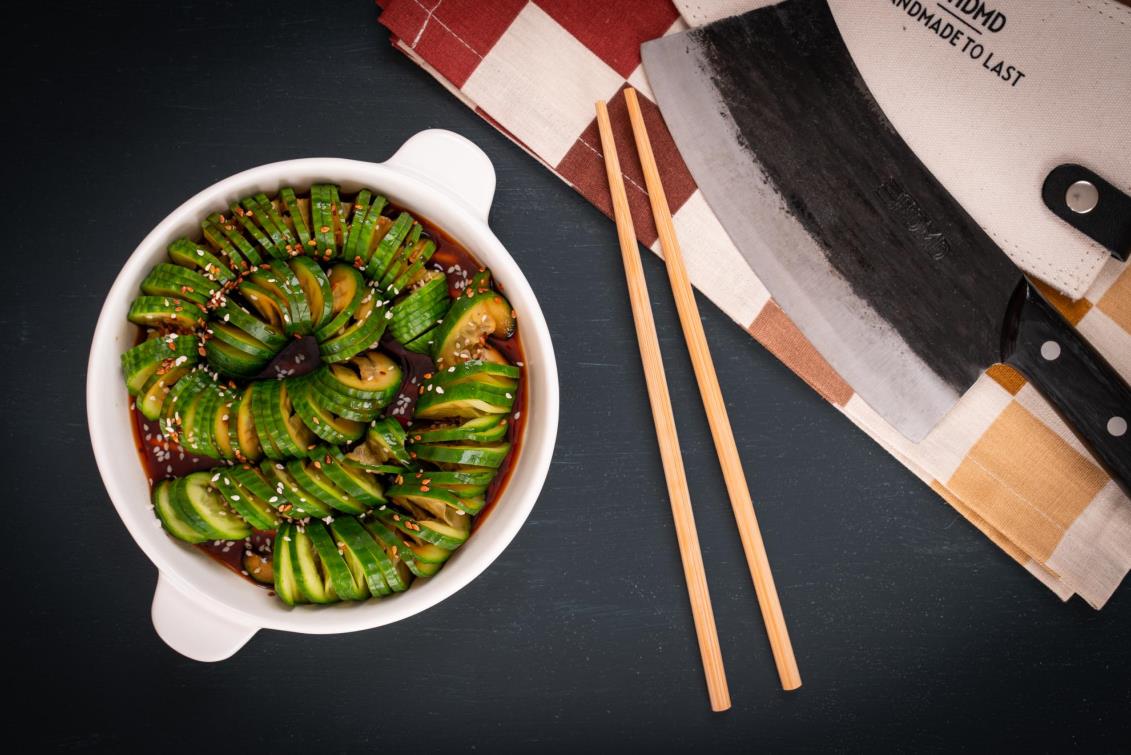What is a chiffonade cut?
The Chiffonade cut is one of the basic chopping skills often used by both professional chefs and home cooks alike. As such it’s a great technique to understand and use every day.
Essentially, the Chiffonade cut is cutting ingredients into long, thin strips or fine shreds for use in various recipes such as stir – fries, omelet dishes, pasta sauces, and so on. The French term ‘chiffonade’ means – shredded or finely cut vegetables or herbs used especially as a garnish (Merriam Webster dictionary).
Table of contents
What chiffonade cut is great for
The most common use of the chiffonade cut is for prepping leafy vegetables or large leafed herbs into long ribbons. However, it’s a versatile cut and something you can use in a variety of ways. Here are some ideas to get your culinary juices flowing!
Salad greens and leafy veg
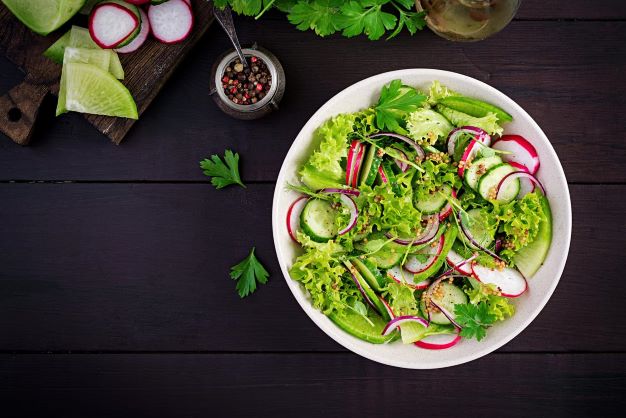
The chiffonade cut was designed for dealing with large vegetable leaves and salad greens. By using this cut you can take big vegetable leaves down to manageable and attractive size, giving you freedom and control to use these in lots of different ways.
Some ideas:
- Cabbage coleslaw
- Chiffonade salad- lettuce or other salad leaves
- Green pestos and dips
- Garnishes for soups- sprinkle the chiffonade leaves lightly on top
- Chiffonade leaves for use in omelets
- Spinach, use chiffonade for things like Paneer (Indian) or Spanakopita (Greek)
Chiffonade herbs

Chiffonade cut is great for finely cutting large leaved herbs, particularly herbs like basil, mint, and cilantro/coriander. This is because their leaf shape is well suited to being rolled up and finely sliced.
Some ideas:
- Herb garnishes
- Chiffonade herbs for soups, stocks, and stews
- Herb omelets and souffles
- Chiffonade herbs for a bouquet garni and flavor dishes like casseroles and stock pot creations
- Chiffonade basil for Asian style fried rice
- Chiffonade herbs work beautifully in sauces and marinades. Chiffonade mint for mint sauce for example, it goes beautifully with roasted lamb!
As basil is the most popular herb for chiffonade, let’s have a look at how to chiffonade it easily!
For this you could use lemon basil, sweet basil, Thai basil or whichever you prefer and have available. Strip the basil leaves off the stems before you start and discard any stems, they’re woody and unpalatable.
How to chiffonade basil
Firstly, you will need to gently wash and then dry off your basil leaves. Wash your basil in slow running cool water so that you do minimal damage to its leaves. Once washed, either let the leaves air-dry or pat them dry gently with a clean tea towel or paper towels.
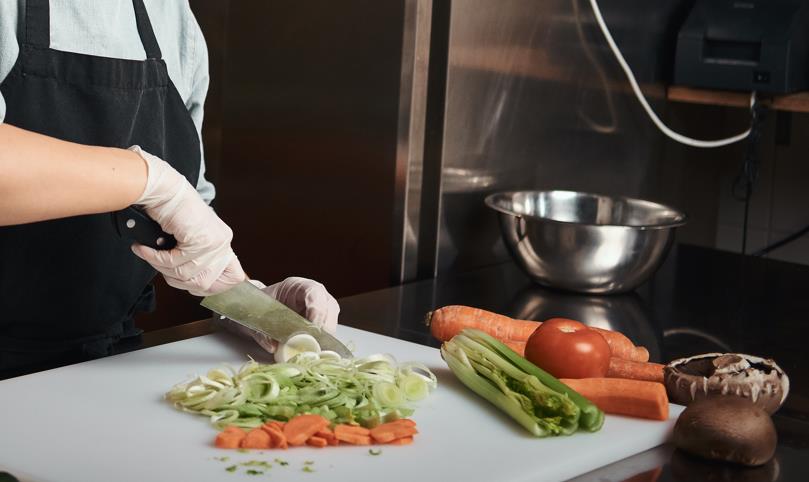
Tools: You’ll need a good quality sharp knife and a chopping board on a steady, even surface.
Handpicked for you
True cutting power in the palm of your hand
Now, follow up step-by-step directions:
Step 1: Once your leaves are dry, you’re going to stack them on top of each other, like a deck of cards.
Step 2: Once you have a neat stack of basil leaves, you’re going to roll them up lengthwise into a tight, neat roll that looks like a cigar.
Step 3: Now, using your lovely sharp knife and grasping the middle of the roll firmly to secure it, you’re going to slice across the roll of leaves crosswise, keeping your cuts close together so that you end up with very fine ribbons. You’ll end up with chiffonade basil that looks like this – TA DA!
This basil chiffonade can be sprinkled through a salad, on top of a soup or used to garnish dishes like focaccia bread or pizzas.
Chiffonade dishes
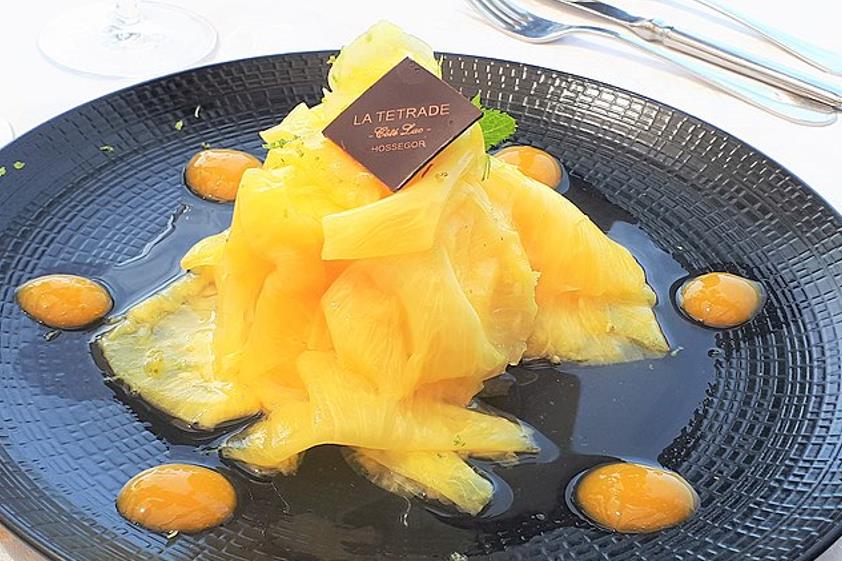
Above you’ll see a dish called ‘Chiffonade d’ Ananas’’ which is a chiffonade of pineapple served as a refreshing dessert.
The chiffonade cutting technique is common to several food cultures and you’ll find it in French, Spanish and particularly Asian cuisines where sliced (chiffonade) egg omelets are transformed into new eating experiences.
Here’s a couple of recipes that you may like to try at home to practice your chiffonade cutting skills!
Southern Style Traditional Coleslaw (Serves 8)
Ingredients
- ½ head green cabbage, chiffonade
- ½ head red cabbage, chiffonade
- ½ head Napa cabbage, outer leaves only, chiffonade. Save the tougher inner leaves for soups and casseroles!
- 2 carrots grated
Method
Mix all the vegetables except half a handful of the carrots in a large bowl.
Add the dressing (recipe below) just before serving, toss, and put into individual bowls. Garnish with the reserved carrot.
Marv’s Slaw Dressing
Ingredients
- ½ cup heavy cream
- ¼ cup mascarpone OR cream cheese, room temperature
- 2 tablespoons honey
- 1 teaspoon salt
- ¼ teaspoon celery seeds
- 1 tablespoon white balsamic vinegar OR sherry vinegar
- ½ tablespoon Dijon mustard
- ½ teaspoon freshly ground black pepper
Method
Place the heavy cream in a medium bowl. Stir in the mascarpone using a whisk until it is blended smooth. Add the rest of the ingredients and mix thoroughly. Store in an airtight container, refrigerated, for up to 2 weeks.
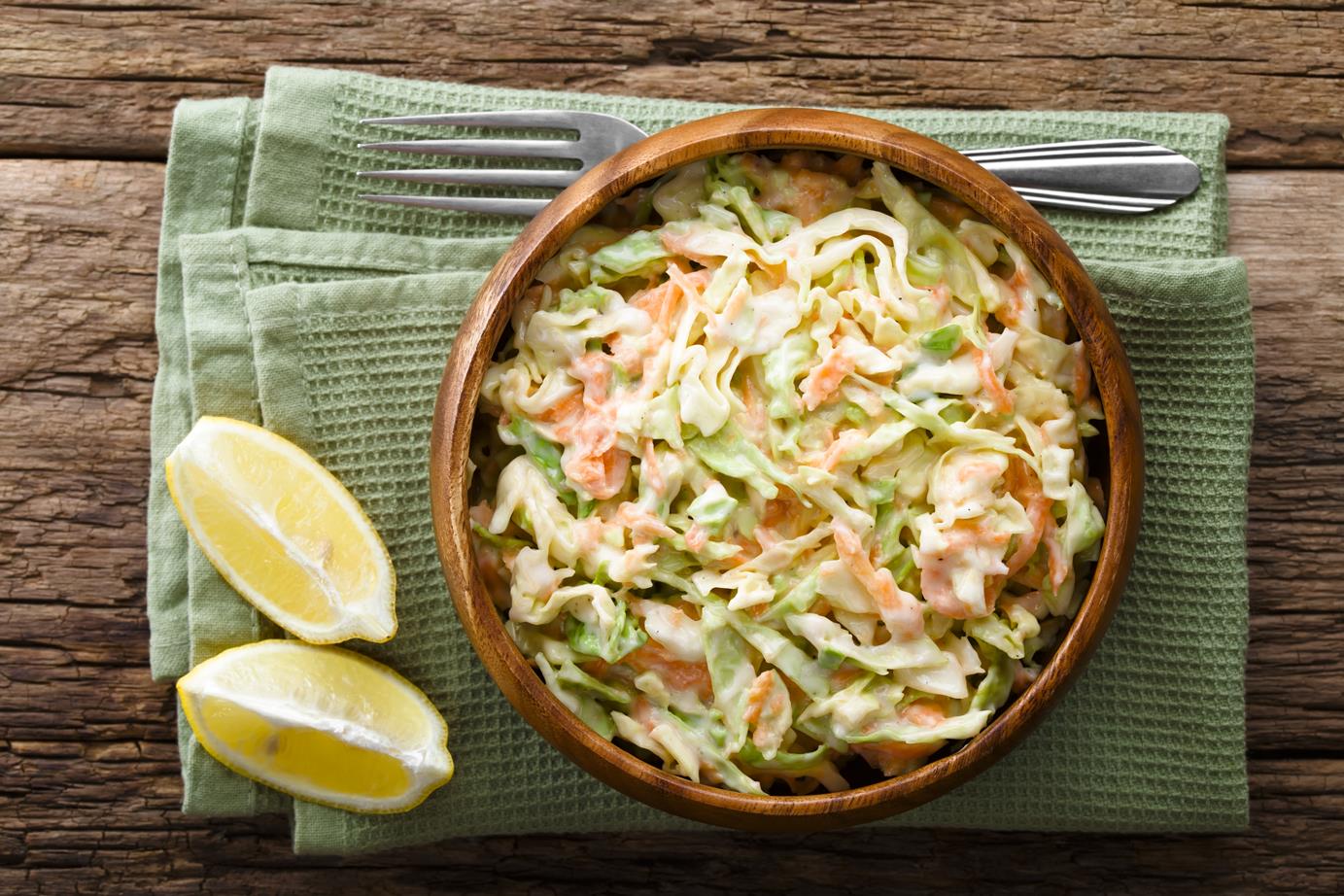
Penne Tossed with Chiffonade Vegetables & Basil Pesto (Serves 8)
Ingredients
- 1 – pound penne, cooked to package instructions
- Roasted veg (350 degrees Fahrenheit for 25 minutes):
- 2 carrots, peeled, chiffonade
- 1 yellow pepper, deseeded, chiffonade
- 1 red pepper, deseeded, chiffonade
- 1 large red onion, peeled, chiffonade
- 2 large handfuls mushrooms of your choice, washed, chiffonade
- 2 or 3 zucchinis, chiffonade
Once the vegetables are roasted, toss them in a large bowl with the cooked pasta, drizzling very sparingly with olive oil to prevent sticking.
Basil Pesto
Ingredients
- 1/8 cup toasted pine nuts
- ½ cup pecorino Romano cheese
- 2 bunches fresh basil, chiffonade
- ½ cup extra virgin olive oil
- Liberal amounts of salt and pepper to taste
Method
- Blend all the pesto ingredients in a food processor and check for seasoning.
- Once the pesto has the consistency you prefer, stir it into the pasta and vegetables and mix everything together in a large serving bowl.
Note: This pasta dish can be served with any variety of vegetables according to your taste and does very well as a salad served at room temperature!
Chiffonade cut vs julienne cut: what’s the diff?
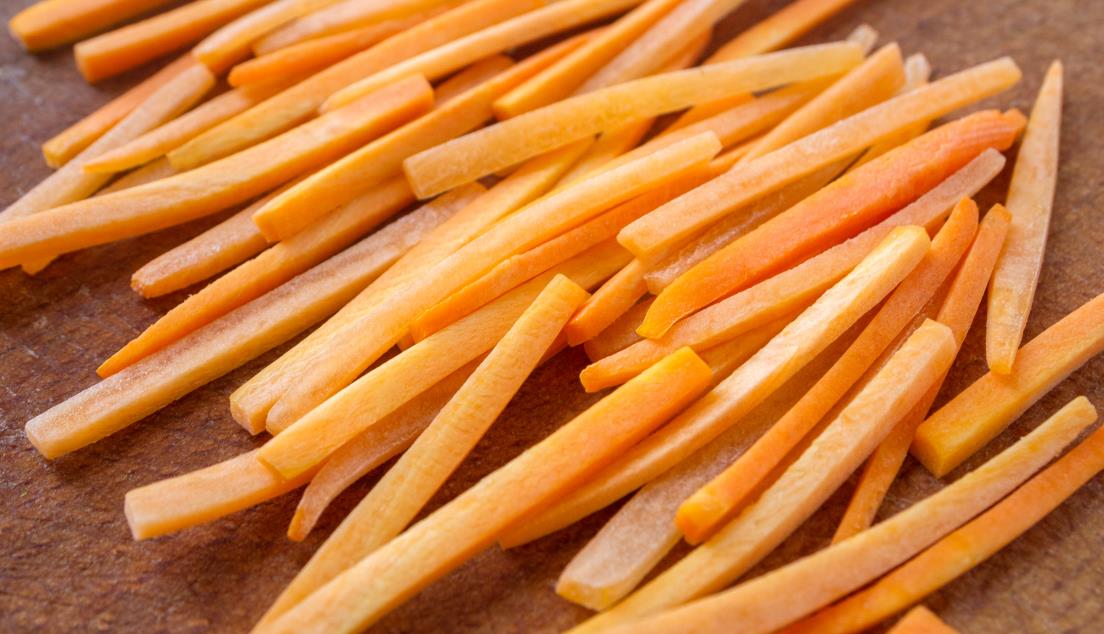
Simply put, to chiffonade is to cut into thin strips or ribbons. In contrast, to julienne means to cut ingredients into thin matchsticks. Here’s a picture so that you see what julienne looks like.
The julienne cutting technique is usually used on firm vegetables like celery (pictured above), carrots or zucchini and is the prep technique favored for things like stir-fries and roasted vegetables.
Julienne cut will give a larger surface area to raw vegetables than chiffonade and ensure that all the pieces are evenly sized. This ensures even cooking for dishes that are for example oven roasted.
Chiffonade because of its fineness is often ingredients used raw for garnishes, whereas the julienne cut would be more often used for cooked dishes as it has a bulkier ‘mouth feel’.
Our top tips for cutting chiffonade!
- Quality, fresh ingredients will give the best chiffonade so don’t use herbs or veggies past their best.
- Store fresh herbs wrapped in a damp paper towel in the crisper drawer of your fridge: this keeps them zingy and strong flavored.
- Use a well sharpened knife to avoid having to slice down more than once and bruising your leaves. A sharp knife will also make your chiffonade quicker and easier .
- Keep fingers well away from the chopping blade for safety.
- Make sure your chopping board is steady and the work surface at a comfortable level for you to chop at.
- Recommended knife for chiffonade: an 8-inch chef’s knife works beautifully and gives good control as you cut.
As we’ve seen, the chiffonade cut is a super kitchen skill to have and will really broaden your ability with both food prep and garnishing. As a fine cut for leafy herbs and veg, it deserves its place in any self-respecting kitchen and we hope that this article motivates you to give it a try.
Thank you for joining us, we’ll see you next time!







